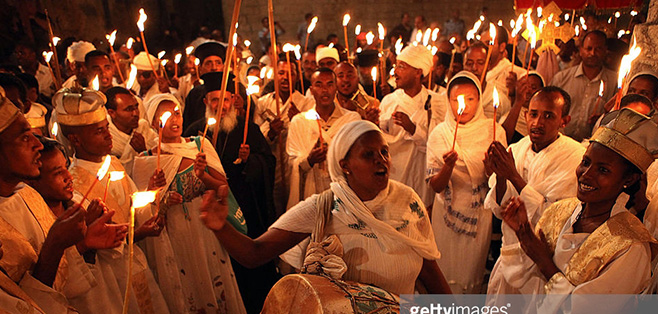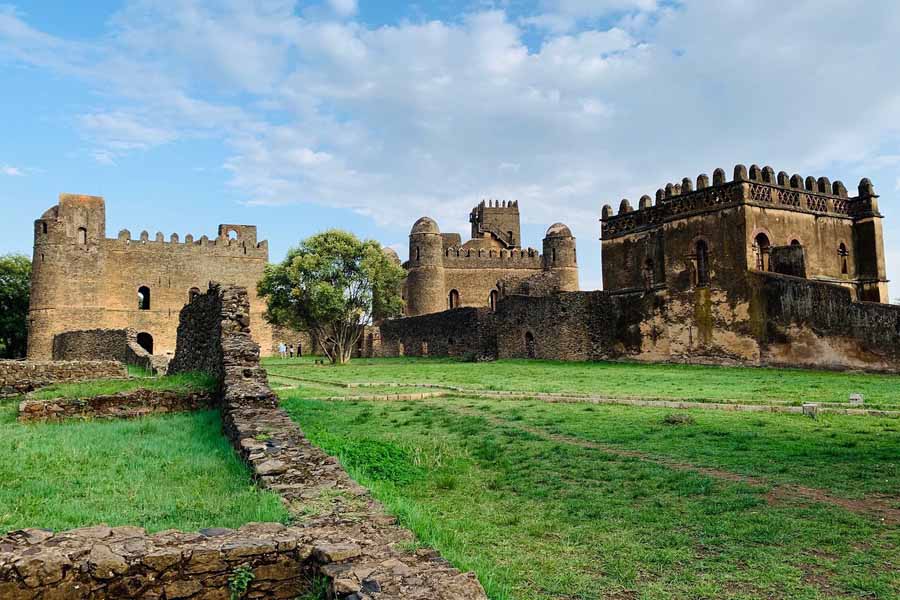Gondar (The City of Castles)
The medieval city of Gondar was founded by Emperor Fasilides in 1636. This fortress-city of the Royal Enclosure (Fasil Ghebbi) was Ethiopia’s capital for over 200 years until the reign of the would-be reforming Emperor Tewodros II. During Gondar’s long years as a capital, the settlement emerged as one of the largest and most populous cities in the realm. It was a great commercial center trading much further in all directions. In the 16th and 17th centuries, the fortress-city of Fasil Ghebbi was the residence of the Ethiopian Emperor Fasilides and his successors. Surrounded by a 900-m-long wall, the city contains palaces, churches, monasteries and unique public and private buildings marked by Hindu and Arab influences, subsequently transformed by the Baroque style brought to Gondar by the Jesuit missionaries. By the late 1640, Emperor Fasilides had built a great castle here, which stands today in a grassy compound surrounded by other fortresses of later construction. With its huge towers and looming battlemented walls, it seems like a piece of medieval Europe transposed to Ethiopia. In addition to this castle, Fasiladas is said to have been responsible for the building of a number of other structures. Perhaps the oldest of these is the Enqulal Gemb, or Egg Castle, so named on account of its egg-shaped domed roof. Other buildings include the royal archive and the stable. Beyond the confines of the city to the north-west by the Qara River, there is another fine building sometimes associated by Fasiladas – a bathing palace.
The building is a two-storeyed battlemented structure situated within and on one side of a rectangular pool of water which was supplied by a canal from the nearby river. It is still used for the great annual Timket (Ethiopian Epiphany) festival celebration. The bathing pavilion itself stands on pier arches, and contains several rooms which are reached by a stone bridge, part of which could be raised for defense. Besides such secular buildings, Fasiladas is reputed to have erected no fewer than seven churches, as well as seven bridges. Fasiladas’ son, Yohannes I and his grandson, Iyasu I, built their own castles in the Royal Enclosure. Another very impressive vestige of Gondar’s great past are the monastery and the ruined palace of Kusquam. The famous James Bruce once lived in this palace in the 18th century up in the hills northwest of the city. Among the churches in Gondar city, Debre Berhan Selassie is famous for its rectangular architectural designs; its ceilings which are uniquely decorated with beautifully winged angels and its walls with impressive scenes depicting Biblical events. These paintings are the results of the great Gondarian style of painting which flourished during the 17th and 18th centuries.
Gondar, which is often described as ‘the city of castles’ or ‘the Camelot of Africa’ was once the capital of Ethiopia for more than 200 years. The establishment of Gondar by Emperor Fasiladas marked a new chapter in the country’s urban history. The Emperor led the way in the construction of a number of impressive castles and churches in and around the town. At first sight the architecture of the castles seems to reflect Moorish- European influences. Closer scrutiny; however, reveals interesting architectural features following in the Axumite tradition as well as the influence of Arabia.
SELECTED PACKAGE
30 November -0001
5 Days Danakil Depression
30 November -0001
5 Days Trek In Bale Mountains
30 November -0001
8 Days Timkat Fastival
30 November -0001
28 Days Complete Ethiopia
CUSTOMIZED AND TAILOR-MADE TOUR PACKAGES
BACK TO THE ORIGIN








